Tags
Arabic, Arianism, Athens, birds, Bishop of Nyssa, Byzantine, Caesarea, Cappadocia, Christian, commentary, Constantinople, Coptic, Coptic Cross, Council of Constantinople, courtesy, Dr. Aziz S. Atiya, Eastern Orthodox, Egyptian, friendship, Greek, illumination, kindness, law, love, Lower Armenia, lozenges, manuscript, monastery, monastic rule, monks, Mrs. Lola Atiya, naskh, Nicene, Orthodoxy, polished laid paper, Pontus, St Basil the Great, St. Gregory of Nyssa, translation
“They who sow courtesy reap friendship, and they who plant kindness gather love.” — St Basil the Great
Commentaries
St. Gregory (325?- & St. Basil (329-379)
9th c. AH/15th c. CE
This manuscript, written on polished laid paper, is an Arabic translation from a Greek or Coptic original of writings by St. Basil the Great and St. Gregory of Nyssa. It is written in large naskh script and contains an illumination of the Coptic Cross, surrounded by birds between the texts of the two books of commentary.
Beginning sections of text are marked with red ink for the text, framed by diamond-shaped lozenges in red and black.
Although the manuscript is undated, the motifs and painting style are typical of Egyptian illumination of the early 9th c. AH/15thc. CE.
St. Basil the Great was born in Caesarea, the metropolis of Cappadocia. After he attended school in Constantinople and at Athens he opened an oratory and law practice. Soon afterwards, he established a monastery in Pontus, which he directed for five years. He wrote a monastic rule which would become the longest lasting of those in the Byzantine East, still practiced by monks of the Eastern Orthodox church. St. Basil was one of the giants of the early church. He was responsible for the victory of Nicene orthodoxy over Arianism (which denied the divinity of Christ) and the denunciation of Arianism at the Council of Constantinople in 381/82.
St. Basil’s brother, Gregory became a Christian in his early twenties. Married, he went on to study for the priesthood. He was elected Bishop of Nyssa (in Lower Armenia) in 372.
Gift of Dr. Aziz and Mrs. Lola Atiya.

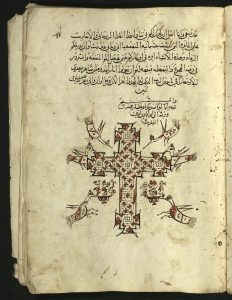
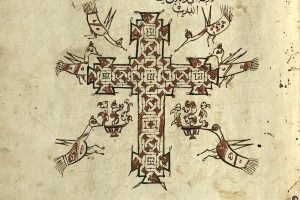
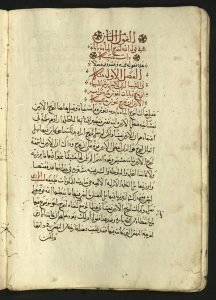
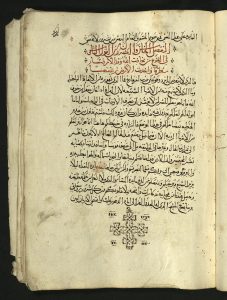
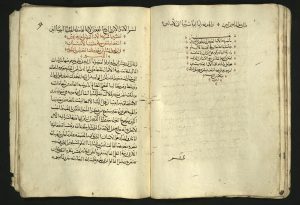
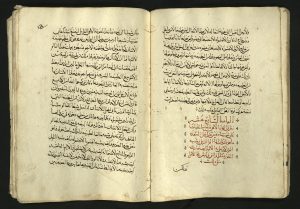
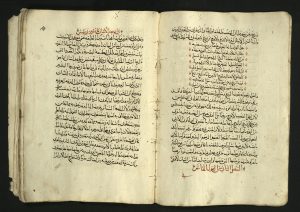
You must be logged in to post a comment.